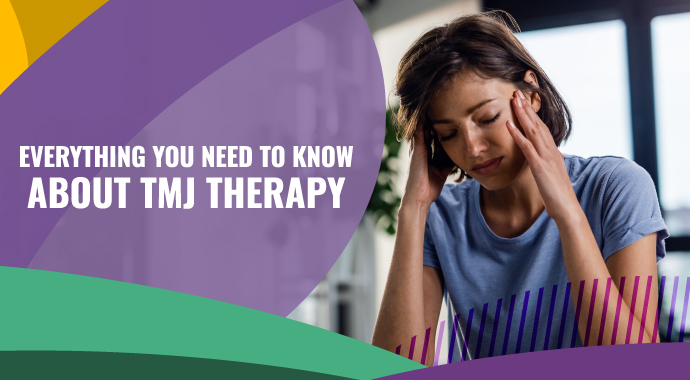
May 18, 2023
BY DR.BAGHDASARIAN
Everything You Need to Know About TMJ Therapy
If you are living in Pasadena and suffer from chronic pain, dizziness, ringing in the ears or facial discomfort due to TMJ disorder, then you should consider the benefits of TMJ therapy. To fully understand how this type of treatment works, we’ll explain what TMJ disorder is and provide information about diagnosis and therapies available today.
Are TMJ and TMD the same thing?
Have you been reading about this for a long time? At Genesis Dental Clinics, we have the answer: they are not the same thing. Temporomandibular disorder (TMD) and temporomandibular joint (TMJ) are often confused, however they are two separate conditions. The temporomandibular joint (TMJ) is the jaw joint located on either side of the head just in front of the ears. It consists of the lower jawbone (mandible), which attaches to the temporal bone of the skull. Instead, Temporomandibular disorder (TMD) is actually a group of several related musculoskeletal problems that affect the jaw and facial muscles, causing pain or dysfunction.
How do I know I am suffering from TMD?
Some common signs and symptoms that may indicate the presence of TMD:
- Persistent pain in the jaw, face, neck or head.
- Difficulty opening or closing one's mouth wide enough to eat comfortably.
- Clicking or popping sounds when opening or closing the mouth (known as crepitus).
- Teeth grinding during sleep.
- Dizziness and ringing in the ears.
Without consulting a professional, it may be challenging to determine if you are suffering from a temporomandibular disorder (TMD). That's why we invite you to meet or visit our dentist in Pasadena, Dr. Ted Baghdasarian, if you are starting to feel any dental issues.
How do I know I am suffering from TMD?
Self-care
Often, TMJ pain is relieved with lifestyle changes and simple home remedies, such as taking over-the-counter anti-inflammatory medications, applying warm or cold compresses to the area, eating a balanced diet low in acidic foods like citrus fruits, practicing relaxation techniques such as deep breathing exercises that help reduce stress levels and avoiding habits like biting fingernails or chewing gum for long periods of time. Massaging the jaw muscles with a gentle circular motion can also be helpful in reducing tension and relieving pain. It’s important to speak to a doctor before starting any exercise program to make sure it’s safe for you specifically.
Noninvasive therapy
In certain cases where these methods don't provide adequate relief from TMJ pain, a dentist may offer specialized treatments such as splints that act as a cushion for your jaw joints or orthodontic treatments to realign your bite correctly. Botox injections may also be used to temporarily relieve pain by preventing specific muscle contractions near the joint. Physical therapy has also been known to help relieve TMJ symptoms by providing exercises that stretch and strengthen jaw muscles that have become weak due to repetitive motions associated with chewing or grinding teeth during sleep. Lastly, surgery may be recommended if all other treatments have failed; this type of surgery typically fixes misalignment or instability in the joint itself.
If you are experiencing persistent pain related to temporomandibular joint (TMJ) problems, it’s essential to seek medical advice. Dr. Ted Baghdasarian is an experienced dentist in Pasadena and TMJ specialist with expertise in diagnosing TMD and providing tailored treatments that can help address your specific needs. To find relief from the discomfort associated with a jaw or muscle issue, contact Genesis Dental Clinics today for a consultation so we can get started on creating an effective treatment plan just for you! With our personalized approach to dental care, we look forward to helping you achieve optimal oral health and comfort sooner rather than later.
Back to Articles



